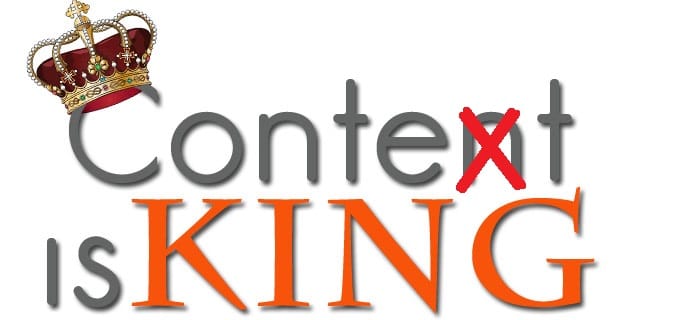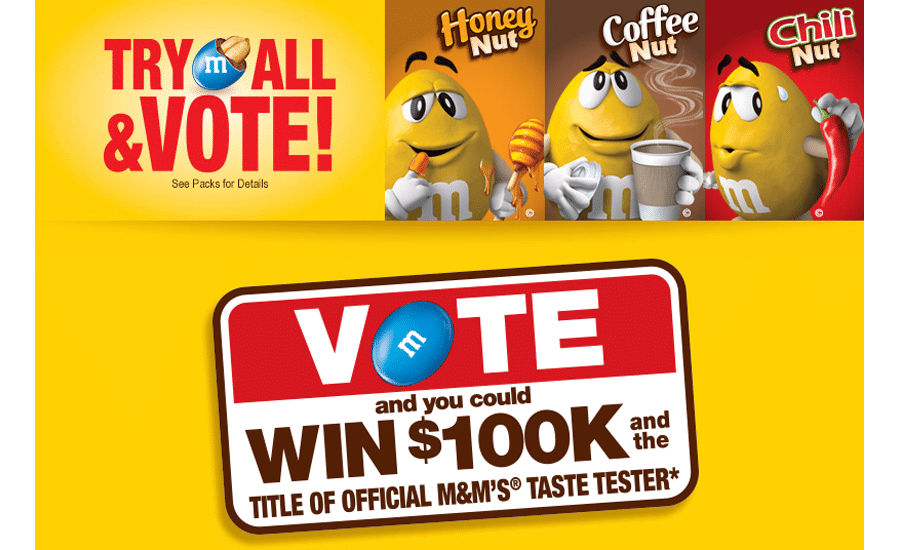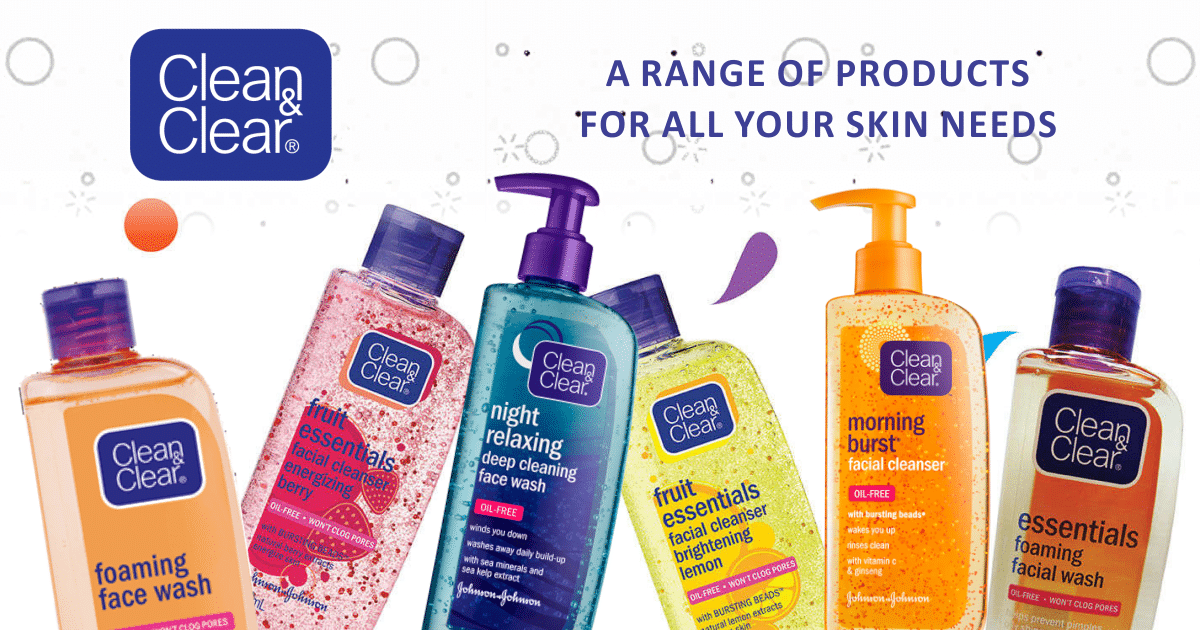
In marketing, the primary goal is to send the right message to the right people at the right time using the right channel. This is what “marketing context” is all about.
According to the Harvard Business Review, the four Ps of traditional marketingi (price, placement, promotion, and product) needs to be shaken up and contextualized according to the particular needs, wants, and circumstances of your customers. What’s being taught in school isn’t quite cutting it.
Contextual marketing enhances the overall customer experience by providing data-driven content that is personalized to an individual’s situation and needs. Engaging content delivered via the platform that your target audience is using helps cultivate more meaningful relationships.
Current State of Marketing
Nowadays, marketing is no longer centered on your brand or product. It’s about the customer and their needs. It doesn’t matter how good your offering is if you’re not delivering value to your target market.
As technology evolves, consumer patience and attention spans become shortened. Marketers need to find creative ways to capture the attention of a user and hold on to it. Customers are more demanding than ever, so marketers need to develop a contextualized and personalized strategy to increase sales.
Consumers expect marketing materials aimed at them to be helpful and highly relevant to their particular situation. Prospects tend to choose the brands that provide them with the most valuable content and communicate with them in the most personalized manner. This is where contextual marketing is critical.
Benefits of Contextual Marketing
Cost Effective
Implementing contextual marketing doesn’t require a huge investment. To build on the context of your communications, you just need to have the right data. This means setting up customer data collection and retrieval via a CRM tool. You’ve got a range of choices when it comes to selecting the best fit for your business. There are even CRM options for small businesses on restrictive budgets.
Targeted Traffic
Contextual marketing uses advanced behavioral targeting. By focusing on a specific behavior and demographic, you can target your prospects right when they’re about to make a purchase decision. This also enables you to place your brand front and center at optimal times to encourage brand awareness, recall, and engagement.
Enhanced Customer Experience and Satisfaction
Wouldn’t you be awed if a solution to your problem magically presented itself to you? Because contextual marketing is highly personalized, the marketing message that gets sent to a consumer is properly timed and strategically positioned. Customers don’t need to be bombarded with marketing messages they don’t want or need. You simply send the message they need at the time they need it.
By improving the context of your marketing campaign, you ensure that each prospect or customer is attended to properly. When customers feel like more than just another sale, trust is built and they become more confident about your brand.
Increased Customer Engagement
The goal of contextual marketing is to create interactions with consumers by anticipating their needs. This provides an avenue for engagement. Not only do you get to place your brand in front of the customer, but also encourage active participation of your brand’s communications. The more you can engage with your customers, the better your chances of retention and converting them into brand advocates.
Non-Disruptive to Consumers and Audiences
Nobody likes being interrupted from their daily chores, routine, or work. Now imagine this:
It’s summer. Your old AC unit has finally breathed its last breath. It’s scorching hot. So, you complain about the heat on social media. Suddenly, a banner image appears on your computer with a discount coupon for air conditioning units. Of course, you check it out. If it’s a great deal, you won’t let it pass. You’ll be extremely likely to take the next step.
With contextual marketing, you won’t see the offering as an ad. You’ll think of it as a solution to your problem.
More Sales and Revenue
Because the advertisements you’re posting are specifically targeted, personalized, and strategically positioned at the time that your customer is about to purchase, conversion rates will be higher, and your sales figures will increase. This is much more effective than large-scale, traditional, mass-marketing efforts that target the general public rather than a specific niche.
How to Set Up Customer Data Collection
So how do you know you’re ready for contextual marketing, and where do you begin? Your CRM tool will be vital in setting up segments that can help you determine the context from which to base your strategy.
Here’s what you need to do before you launch a contextual marketing campaign:
Set Up Your Lifecycle Stages
Lifecycle stages provide insights about where your customer is in their buying journey. Once you have lifecycle stages, determine who among your contact database are leads, subscribers, marketing/sales qualified leads, customers, and so forth.
This will enable you to segment your customers and prospects into groups, thereby helping you determine the type of marketing content that would work best to influence them.
Define Your Buyer Persona
Buyer personas represent your ideal customer. Depending on your industry or niche, you can create a single persona or multiple buyer personas. This will help you classify each of your contacts and determine the right content and platform where you can reach them.
Think of each persona as a real person with specific daily routines or work processes, challenges, problems, needs, wants, and plans. The more detail you put into this, the easier it is for you to create a solid path that will lead your target audience straight to your doorstep.
Clean and Audit Your Contact Database
You’ve built your contact database or subscriber list through the years. You may have thousands of contacts, but are they still relevant? Do these numbers or email addresses even work? Bad contact details result in bad data and metrics.
Your emails can be undelivered, the content you send them may no longer be relevant to their current situation, or worse, your message might get flagged as spam. The solution: customer data cleansing.
Some companies perform database audits monthly, while some prefer to do it quarterly. This frequency can depend on the volume of leads and subscribers that you’re getting every month. Some CRM tools can automatically delete contacts from the database after a hard bounce.
Identify any incorrect information and missing details. If for example, you want to create a segment by industry but don’t have that information for some contacts, you may need to reach out to these prospects (or customers) to get that necessary information.
Keep your database healthy to ensure that the right messages are being delivered to the right people. If your CRM tool does not support database cleanup, there are third-party list verification software solutions that you can use.
Amp Up Your SEO Strategy
SEO is an ever-evolving landscape. Every year, new techniques and trends come up, so it’s vital that you check your site and optimize it for search engines so that your target audience can find your content in the right context.
Check your keywords. Are you ranking for keywords that your specific target audience or buyer personas use? If search engines cannot properly crawl your site, and users cannot find your content, then you’re wasting highly relevant and potentially valuable content. What’s the use of content that no one can see?
Remember, SEO isn’t about fluffing your content with keywords. You need to optimize it for users and the search engine spiders. Ensure that your content has impeccable grammar and smooth storytelling.
Identify Your Top Performing Content
Your top performing content can indicate what your users and target audience need and want. Web pages and blog posts with high clicks and super engagement rates are the ones that your target audience may be looking for.
Once you have identified which of your content pieces performs ahead of the others, you can then create content that revolves around that theme or topic. Consider content formats as well. What formats did your users consume more? Do they like eBooks, videos, or regular blog posts?
Your top performing content can also provide insights about the context of your users and target audience so that you can create more personalized and tailored content.
Improve Your Website User Interface
Sometimes, marketers become so focused on their campaigns that they fail to check their main website. Remember that your website is your main calling card and portfolio. It’s critical in your marketing and sales campaign.
Check for broken links and unnecessary pages and images that can contribute to a prolonged page load time. Click around and see if all the buttons work and if they’re leading to the right webpage. Is there too much clutter? Are the colors distracting? Does the overall design project the personality of your brand?
More than 50% of users now browse using their mobile devices. Is your website responsive to any screen size? Is it easy to tap the navigation buttons with your fingers? Take the necessary time you need to browse your website to find imperfections. Again, some CRM tools can provide page performance metrics.
What’s important here is that you remove anything that poses an obstacle to the sale. For example, if a user searches for “buy bicycles” and lands on your bicycle store website, everything they see should drive them towards a purchase decision.
Examples of Great Contextual Marketing Campaigns
M&M’s
M&M’s, the famous chocolate, is undergoing a contextual marketing campaign to increase brand engagement with millennials after discovering that millennials have slowed down their consumption of chocolate candies.
The marketing team then came up with a fun idea of creating social media polls to get consumers to vote on the new Peanut M&M flavor. The audience was given three choices namely chili nut, honey nut, and coffee nut. M&M’s placed large banner ads and graphics asking their fans to vote on their Facebook and Twitter handles.
The result was a huge increase in brand engagement amongst their target audience. All thanks to M&M’s ability to shift the context from their own brand to the consumers’.
16Handles
16Handles, the soft-serve yogurt chain in the US, is another company that harnessed the power of contextual marketing after having concluded that the target market for their product is comprised of 16-25-year-olds who use Snapchat. They launched a contextual marketing campaign that catered specifically to that demographic.
Figure 1. Image Courtesy of Social Fresh
The company asked Snapchat users to share photos of themselves at any 16Handles location and send it to the Snapchat of 16Handles. After doing so, these consumers were sent a 16Handles discount coupon anywhere from 16 to 100% off. Because of Snapchat’s limited window of time whereby you can see a message, the discount recipients only had 10 seconds to show the message to the cashier.
Instead of pushing their target audience to visit their stores, 16Handles rewarded those who were already at the store, and consumers responded well.
Johnson & Johnson
Johnson & Johnson wanted to have a more meaningful engagement with their consumers regarding headache remedies, skin care, and other health-related concerns but knew that it would be highly difficult to do this with just a website or blog.
J&J’s Clean and Clear campaign provides yet another great example of contextual marketing. To reach their target audience, they established their brand within existing teenage community sites. Because teenage girls were found to spend most of their time chatting with their friends online, they sent them shareable electronic postcards offering free skin analysis and samples of Clean & Clear products.
The campaign succeeded because of the viral component that encouraged the girls to refer as many friends as they could. The referrals multiplied exponentially and enabled J&J to position its product right where the audience wanted it at less cost.
Conclusion
Contextual marketing is a cost-effective way to reach your target audience and generate more sales and revenue. Because it’s strategically targeted to a specific group of people, you can easily measure its success by only taking that particular channel into account.
The examples above clearly show how simple yet effective contextual marketing can be when it comes to establishing your brand, generating interest, and gaining more customers. Contextual marketing at its heart simply requires good data and the ability to use it in the right context to the right people at the right time, through the right channel.
Find out how an effective data-driven strategy can create a better experience for your customers.















